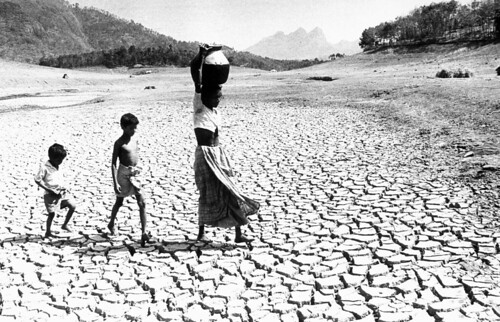1.Population and Urbanization
-
an empirical correlation exists between the rate
of population growth and the level of economic development, which is often
equated to quality of life
-
Meeting and stabilizing population growth is
possible through improving quality of life and expanded development that is
equitable and sustainable
-
The challenge is how do we improve quality of
life?
2. Health (unclean air, water and land)
World Health Organization
— - estimates
that poor environmental quality contributes to 25 percent of all preventable
illness in the world.
— - reports
that 900 million people lack access to an improved water supply
-for
people living in poverty, illness and disability translate directly to loss of
income. This can be devastating for individuals and their families who are
dependent on health for their income
— - Health
is linked to Sustainable Development –” Health is the outcome of sustainable
development. The goals of sustainable development cannot be achieved when there
is high prevalence of debilitating illness and poverty, and health of the
population cannot be achieved without a responsive health system and healthy
environment. Environmental degradation, mismanagement of natural resources, and
unhealthy consumption patterns and lifestyles impact health. Ill health in
turn, hampers poverty alleviation and economic development (WHO, 2005)
— - Ecosystem
provides the fundamental stepping stone in the economic empowerment of rural
poor.
3. Water Scarcity, Conflict and Resolution (limited
resource and distribution)
— -Water
scarcity is a situation where there is insufficient water to satisfy normal
human requirements. WHO defines normal human requirements as reasonable access
to a water source: availability of at least 20 L/capita-day from a source
within 1 km of the user’s dwelling.
— - A
country is defined as experiencing water stress when annual water supplies drop
below 1,700 m3 per person and water scarce when annual water supplies
drop below 1,000 m3.
— - The
Philippines is expected to have water scarcity by 2025 (World Meteorological
Org.)
— - Water
is expected to be a source of source of both tension and cooperation in the
future.
— - Finding
sustainable economic solution to the water infrastructure problems is another
challenge.
4. Energy and Climate (GHG emissions)
— - Energy
consumption of the country has increased for the past ten years due to
commercial and industrial development and improve accessibility.
— - It
is expected that supply of energy will further decline due to increase in
demand and limited energy development projects
— - Energy
consumption is one reason why greenhouse gas is causing change to our climate.
Majority of these emissions aree associated with burning fossil fuels.
— - The
Intergovernmental Panel on Climate Change expects that Global Temperature will
likely rise from a range of 2.4 oC to 6.4 oC.
— - Impact
of Climate Change differs in every location – drought, floods, typhoons, loss
of species
— GHG
can be curbed if overall emissions are reduced by 80% by 2050 (some scientists)
5. Toxic Chemical and Finite Resources (release of toxic
chemicals and reliance to non-renewable resources)
- The
release of toxic chemicals to the environment remains a global issue (Nuclear
disaster in Fukushima)
- These
poses great health risk to human health and the ecosystems
- Reliance
to non-renewable resources will increase in large magnitude due to population
growth
- It
could be mitigated by integrating in the design the use of green technologies
6. Materials flow and built environment (the embodied
energy used by the materials and urban heat islands)
-— The
built environment is where we live, work, shop, study and play. It requires
tremendous amount of water, energy and natural resources for its construction
and operation.
— - Materials
used in building the built environment uses tremendous resources and energy
- The
built environment also affects the local heating of urban areas – termed as the
“Urban Heat Island” – as well as the quantity of water that cycles
— - Impervious
structures affects the filtration of water to the aquifers
— - A
strategy to mitigate effect is through “smart growth or new urbanism”. Both of
these approaches to urban development are focused on designing communities that
preserve natural lands, protect water and air quality and reuse developed land.










